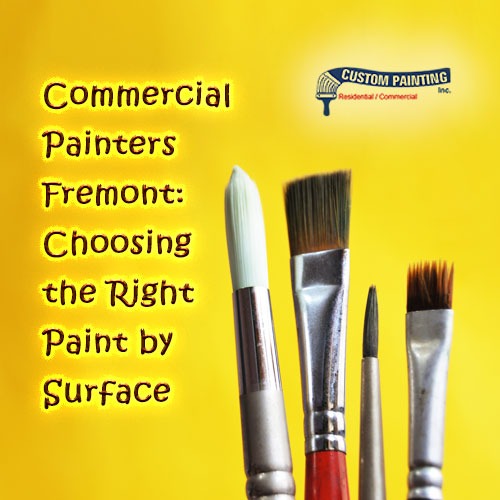Experienced commercial painters in Fremont are well-versed in painting a variety of surfaces. They know all too well about which paints and other finishes they should use. It’s not only about making the surfaces look good again, it’s also about adding another layer of protection against elements such as heat, dust and moisture.
It’s not only the paints that will make the surfaces protected, longer-lasting and looking brand-new again. It also entails proper preparation for the paint to effectively adhere to them.
Bare wood – Sand the surface with a fine sandpaper until it becomes smooth and level. Then coat it with a stain-blocking primer. Either a high-quality latex (water-based) paint or an oil-based paint is good for the job.
Painted or sealed wood – It is important to clean the surface first before applying anything. A wet, clean rag may do the job. But for more stubborn stains, you may apply trisodium phosphate (TSP) or any non-residue cleaning agent. Smoothen the surfaces with sandpaper. After the surface has been prepared, coat it with a high-quality latex paint.
Drywall – If there is a peeling or flaking paint, scrape it gently with a paint scraper. If you see any damage to surfaces such as nail cracks and nail grooves, fill them with drywall compound in reasonable amounts. Let it dry, then refill. Do not overfill as to avoid excessive sanding later.
Since dusting might leave lots of dust on the surface, remove it by wiping the surface with a clean, damp cloth. While a lot of paints can be used on a drywall surface, it is best to apply a high-quality acrylic paint.
Brick – Cleaning and preparing masonry like brick may take a long while. Use a wire brush to remove dirt, dust, soot, grime and efflorescence (or chalking) from the brick. Do it in a gentle, careful manner so as not to dig out the mortar. Scrub the surface with sudsy water and rinse. Let it dry for at least 48 hours.
While an ordinary latex paint is adequate, an elastomeric paint is better as it is specifically made for painting masonry (such as brick) or any other porous surfaces. An elastomeric paint helps in bridging the cracks, gaps and holes on the surface. It also helps prevent water from entering the masonry, yet it also “breathes” as to allow the moisture from within the masonry to escape in the form of a vapor.
An elastomeric paint is flexible, which means that it can adapt to the expansion and contraction cycles of the masonry to ensure that even the faintest of cracks are sealed completely.
Ceramic tile or porcelain – While ceramic tile or porcelain is smooth you may still want to sand it with a 150-grit sandpaper to make sure that the paint will better adhere to it. Clean the surface with TSP or any other non-residue cleaning agent.
To get the best finish, prime it with an acrylic primer and then topcoat it with a semi-gloss acrylic paint (for the interior).
Concrete – Use a wire brush to remove dirt and any loose particles or excessive mortar. Clean the surface with TSP or any non-residue cleaning agent. Let it dry for 48 hours.
Topcoat it with an elastomeric paint. Or coat it with a masonry sealer, let it dry completely, then prime it with an acrylic latex primer before top coating it with an acrylic latex paint.
Metal – Use a wire brush to remove dirt, flaking paint or rust. Next, smoothen it with 220-grit sandpaper. Do not clean it with a soapy water; instead, just use plain water to rinse it. Let it dry.
Once dried, apply the surface with an exterior primer and paint that are specifically made for metal.
Aside from the proper preparation, choosing the right kinds of paint is another method to achieve the successful results you desire. If you have any questions or doubts on what type of paints you should apply to a surface, do not hesitate to seek advice from commercial painters in Fremont. They will give you the best suggestions not just on the type of paints, but also the different finishes and colors.

